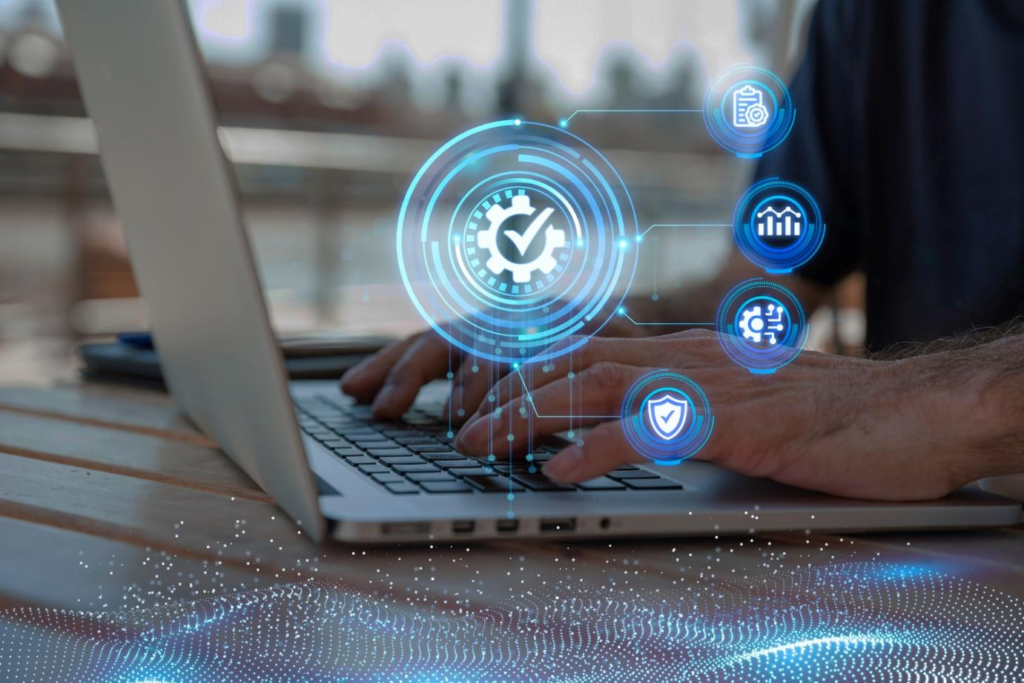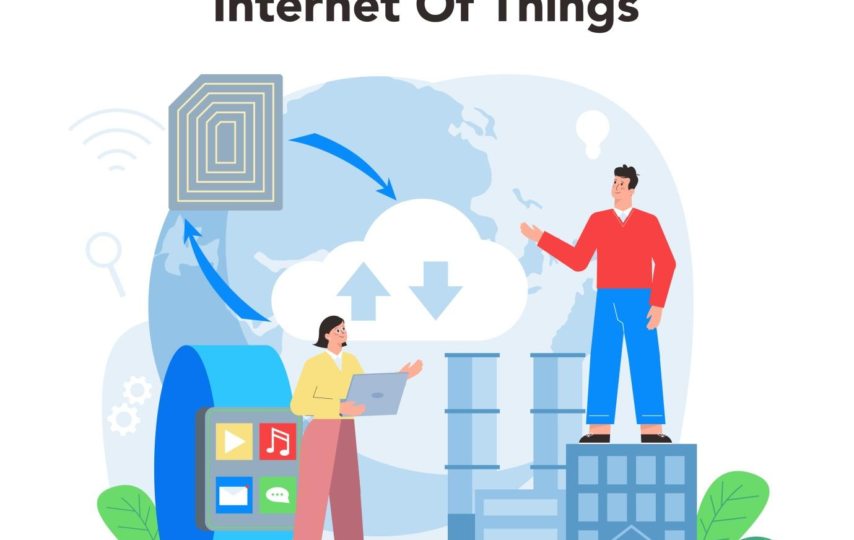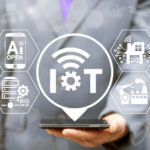The Internet of Things (IoT) has revolutionized the way businesses operate, especially in the realm of marketing. With the increasing number of connected devices, it has become possible for businesses to gather and analyze business data on their customers’ behavior, preferences, and habits in real-time. This data, in turn, can be used to create personalized marketing strategies that can drive results and improve customer engagement.
In this article, we will explore the use of IoT in marketing and how businesses can leverage this technology to achieve their marketing goals. We will examine the benefits of IoT in marketing, the challenges that businesses may face, and best practices for successful implementation. We will also showcase case studies of companies that have successfully used IoT in their marketing campaigns and discuss emerging trends in IoT marketing. By the end of this article, you will have a better understanding of how to use IoT to drive results in your marketing efforts.
Understanding IoT in Marketing
IoT devices are interconnected devices that can communicate with each other and collect and transmit data over the internet. In marketing, IoT devices can be used to gather data on customers’ behavior, preferences, and habits in real-time. This data can then be analyzed to gain insights into customer behavior and to create personalized marketing strategies that can drive results.
Examples of IoT devices used in marketing include wearable devices, smart home devices, and beacons. Wearable devices such as smartwatches and fitness trackers can collect data on users’ physical activity, heart rate, and sleep patterns. This data can be used by health and fitness companies to create personalized marketing messages tailored to individual users.
Smart home devices such as smart speakers, thermostats, and home security systems can also be used in marketing. For example, a home security company can use data from smart home devices to create personalized messages for homeowners about protecting their homes and families.
Beacons are small devices that can be placed in physical locations such as stores or airports to collect data on users’ movements and behavior. This data can be used to create personalized messages for users based on their location and behavior.
In addition to collecting data, IoT devices can also analyze data in real-time to provide insights into customer behavior. This allows businesses to make informed decisions about their marketing strategies and to adjust them in real-time based on customer behavior.
Leveraging IoT for Marketing
To leverage IoT for marketing, businesses should start by developing a strategy that aligns with their marketing goals. This strategy should involve identifying the types of IoT devices that are most relevant to their target audience and determining how to integrate those devices into their marketing campaigns.
For example, a clothing retailer might use IoT devices such as smart mirrors that allow customers to see how they would look in different outfits. The retailer can then use data collected from the smart mirrors to create personalized messages for customers based on their preferences.
To integrate IoT devices into marketing campaigns, businesses need to ensure that they are collecting and analyzing data in a way that is both effective and ethical. This means being transparent about data collection and use, and ensuring that customers have the option to opt-out if they choose.
Collecting and analyzing data from IoT devices can help businesses to improve their marketing efforts by providing insights into customer behavior and preferences. For example, a restaurant might use data from a smart thermostat to determine the busiest times of day and adjust their marketing campaigns accordingly.
In addition to collecting and analyzing data, businesses can also use IoT devices to engage with customers in real-time. For example, a retail store might use beacons to send personalized messages to customers when they enter the store, promoting special deals or discounts based on their past purchases.
Benefits of IoT in Marketing
There are several benefits of using IoT in marketing:
- Improved customer experience and engagement: IoT devices allow businesses to create personalized experiences for their customers by collecting data on their preferences, behavior, and habits. This can lead to higher levels of engagement and customer satisfaction.
- Increased customer loyalty: By providing personalized experiences, businesses can foster a sense of loyalty and connection with their customers, leading to repeat business and positive word-of-mouth referrals.
- Enhanced personalization: IoT devices provide businesses with a wealth of data that can be used to create highly personalized marketing messages and experiences, tailored to individual customers.
- Improved data accuracy: IoT devices collect data in real-time, providing businesses with accurate and up-to-date information on customer behavior and preferences. This data can be used to make informed decisions about marketing strategies and to adjust them in real-time.
- Increased efficiency: IoT devices can automate certain marketing tasks, such as collecting and analyzing data, freeing up time and resources for businesses to focus on other aspects of their marketing campaigns.

Challenges of IoT in Marketing
While there are many benefits to using IoT in marketing, there are also several challenges that businesses may face:
- Data privacy and security: IoT devices collect large amounts of data on customers, which can lead to concerns about data privacy and security. Businesses need to ensure that they are collecting and storing data in a secure and ethical manner to protect both their customers and their business.
- Integration with existing systems: Integrating IoT devices with existing marketing systems and processes can be complex and time-consuming. Businesses need to ensure that they have the necessary infrastructure and resources in place to support the integration of IoT devices into their marketing strategies.
- Technical complexity: IoT devices and the technologies that support them can be complex and require specialized skills and knowledge to manage effectively. Businesses may need to invest in specialized training or hire new employees with IoT expertise.
- Cost: Implementing IoT devices can be expensive, especially for small businesses with limited budgets. Businesses need to carefully consider the costs and benefits of using IoT in their marketing strategies to ensure that they are making a wise investment.
- Customer acceptance: Not all customers may be comfortable with the use of IoT devices to collect data on their behavior and preferences. Businesses need to be transparent about their use of IoT and ensure that customers have the option to opt-out if they choose.
Best Practices for IoT Marketing
Here are some best practices for using IoT in marketing:
- Develop a clear strategy: Before implementing IoT devices in your marketing strategy, it is important to develop a clear plan that aligns with your marketing goals and objectives. This strategy should include identifying the types of IoT devices that are most relevant to your target audience and determining how to integrate them into your marketing campaigns.
- Focus on data privacy and security: Collecting and using data from IoT devices requires a high level of responsibility and transparency. It is important to prioritize data privacy and security by being transparent about data collection and use, obtaining customer consent, and implementing strong security measures to protect customer data.
- Use data to personalize experiences: IoT devices provide a wealth of data that can be used to create highly personalized experiences for customers. Use this data to create targeted and relevant marketing messages that resonate with your audience.
- Ensure IoT devices are user-friendly: IoT devices should be easy to use and understand for customers. Provide clear instructions and user interfaces that are intuitive and easy to navigate.
- Test and optimize: Like any marketing strategy, it is important to test and optimize your IoT campaigns to ensure they are effective. Use data analytics to track customer behavior and campaign performance, and make adjustments as needed to improve results.
- Be transparent with customers: It is important to be transparent with customers about your use of IoT devices and how their data is being used. Provide clear and concise privacy policies, and give customers the option to opt-out of data collection if they choose.
Future of IoT in Marketing
The future of IoT in marketing is promising, as more and more businesses recognize the benefits of using IoT devices to collect data and create personalized experiences for their customers. Here are some trends and developments that are shaping the future of IoT in marketing:
- Increased adoption of smart devices: The number of smart devices is expected to continue to grow rapidly, providing businesses with even more opportunities to collect data and create personalized experiences for their customers.
- Integration with AI and machine learning: The use of AI and machine learning algorithms to analyze and interpret data from IoT devices will become more prevalent, allowing businesses to make more informed decisions about their marketing strategies.
- Expansion of IoT ecosystems: IoT ecosystems will continue to expand, creating new opportunities for businesses to connect with customers through multiple channels, such as smart homes, wearables, and vehicles.
- Improved data security and privacy: As concerns about data security and privacy continue to grow, businesses will need to prioritize these issues by implementing strong security measures and being transparent about their data collection and use.
- Greater focus on customer experience: With the increasing availability of data from IoT devices, businesses will be able to create even more personalized and engaging experiences for their customers, driving customer loyalty and brand advocacy.
Conclusion
In conclusion, the use of IoT devices in marketing provides businesses with a wealth of data that can be used to create personalized experiences for their customers, increase engagement, and drive results. While there are challenges to using IoT in marketing, such as data privacy and security concerns, technical complexity, and cost, businesses can overcome these challenges by prioritizing data privacy and security, investing in the necessary infrastructure and resources, and being transparent with their customers about their use of IoT devices.








